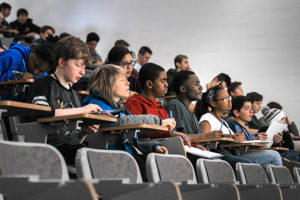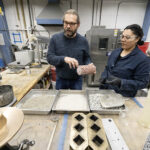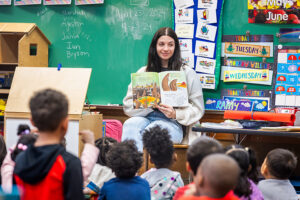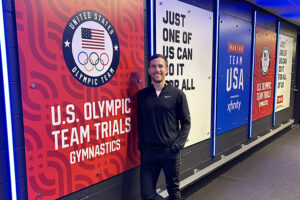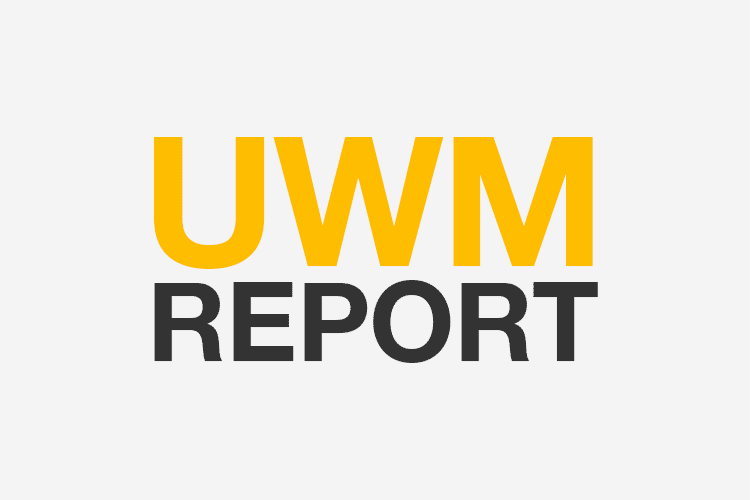Students from 10 Milwaukee-area schools are putting their heads together to improve the Milwaukee County Zoo’s trains, with help from UWM and other partners.
As part of the Zoo Train Challenge, an ongoing project to make the operation of the zoo’s passenger trains safer and more efficient, over 120 students filled Lapham Hall’s east atrium on Friday, Dec. 13, to present their ideas on how to improve the coal-handling process. The one-quarter size trains, including two coal-powered steam locomotives, take over 400,000 passengers around the zoo each year.
In the audience to give feedback were UWM engineering students, Milwaukee County Zoo officials and Learn Deep Milwaukee, an organization that connects teachers around Milwaukee with community partners to give students practical experiences.
“It’s a real-world challenge with difficulties that require real-world solutions,” said Christine Beimborn, UWM’s STEM outreach specialist and a coordinator for the event. “There’s no one right answer. It needs several solutions.”
This year, students offered up solutions to a broad range of problems, like reducing coal waste by sifting the coal, creating safer conditions for workers who fill the trains by installing hydraulic lifts or storing the coal more efficiently by adding waterproof roofs.
Students received written and oral feedback from UWM engineering students, zoo officials and other students based on how well their designs addressed these key concerns.
Peter Reynolds from Learn Deep Milwaukee sees a need for each idea, as this event is only the midpoint in the planning process. To him, it is a chance for cooperation among schools. Students can see other students’ designs, ask questions and incorporate different ideas into their own final projects, which they will share in the spring of 2020, he said.
“It’s not a competition. It’s a ‘co-opetition,’” he said.
A welcome challenge
New Berlin Eisenhower students decided to tackle several problems for their second year on the project.
In their presentation, the group of juniors and seniors drew up a shed-like structure for storing coal, as well as included designs for an auger to move the coal into a hydraulic cart that would lift the coal into the train.
For seniors Melissa Erman and Peter Rogalinski, who participated on last year’s project to rebuild the zoo’s water tower, this year’s challenge tested them.
They explain that with this open-ended project, they could focus on any number of problems to fix, which makes it more difficult to think of a solution that would encompass multiple issues. But for a team like theirs with their hearts set on studying engineering, it is a welcome challenge.
“This is so much more of a real-life application that it really immerses you into what the career will most likely be like,” Erman said.
Next steps
Participating groups ranged in age from Golda Meir Middle School to high school students from New Berlin Eisenhower and New Berlin West, the Elmbrook LAUNCH Program, West Allis, Pathways, St. Thomas More, Wauwatosa East, Menomonee Falls and St. Joan Antida.
UWM is one of five higher education partners. Other partners include Marquette University, Milwaukee Area Technical College, the Milwaukee School of Engineering and Waukesha County Technical College.
The zoo will settle on a design, or elements from several designs, when the schools reconvene to present their final models in the spring.
